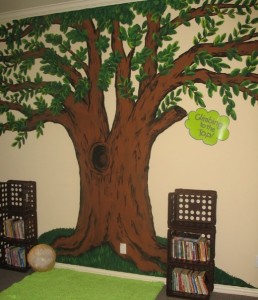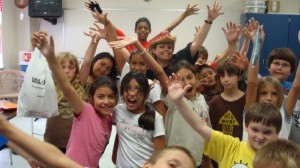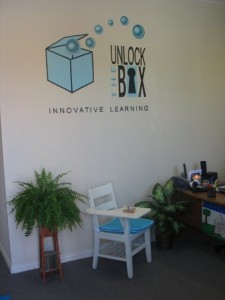In this, my fourth and last installment in this series on instructional design, I felt it fitting to reflect on some of the theories and techniques behind the practice of building effective instruction.
 Several years ago, I partnered with a former teacher colleague of mine and opened an innovative tutoring company called Unlock the Box that provided targeted, hands-on, experiential learning opportunities for struggling students.
Several years ago, I partnered with a former teacher colleague of mine and opened an innovative tutoring company called Unlock the Box that provided targeted, hands-on, experiential learning opportunities for struggling students.
Our focus was on giving students the tools they needed to take charge of their own learning, as well as giving them the confidence they needed to actually use those tools to succeed.
Our students weren’t successful in traditional school environments, so we were endlessly creative as we designed outside-the-box learning experiences for them.
To teach geometry, computation, and interpersonal skills, we had a team of  students collaborate to build a clubhouse outside our learning center. To teach the parts of the brain, we hosted a glow-in-the-dark scavenger hunt wherein we transformed the whole center into the inside of a brain and had students practice performing fun tasks which used the various parts of their brains throughout the lesson. To practice spelling words, students bounced on a trampoline and made up jumps to go with the letters in their words.
students collaborate to build a clubhouse outside our learning center. To teach the parts of the brain, we hosted a glow-in-the-dark scavenger hunt wherein we transformed the whole center into the inside of a brain and had students practice performing fun tasks which used the various parts of their brains throughout the lesson. To practice spelling words, students bounced on a trampoline and made up jumps to go with the letters in their words.
Besides being a whole lot of fun, creating these kinds of learning experiences for students was so rewarding. This wonderful combination of hands-on learning, higher-level thinking, collaboration, and metacognitive strategies actually worked. Our students progressed exponentially. It felt almost… miraculous.
 It was extraordinarily satisfying to see how engaged students were as they were learning, to watch them grow in their knowledge and skills, and most of all, to witness their confidence building as they transformed these genuine learning experiences into academic and personal success.
It was extraordinarily satisfying to see how engaged students were as they were learning, to watch them grow in their knowledge and skills, and most of all, to witness their confidence building as they transformed these genuine learning experiences into academic and personal success.
One of the challenges I now face as an instructional designer for an educational technology company is creating positive learning experiences for students within the limitations of two dimensions. We can’t go outside and blow bubbles to learn how to measure wind direction. We can’t build the parts of a cell out of pipe cleaners and felt. We can’t make fossils out of paper mache or paint the whole wall with neon math facts.
But as instructional designers, we still want to activate students’ prior knowledge, build meaningful learning experiences for them, and focus their attention on the mastery of critical skills. Not only that, but we want to encourage students to use transferrable, higher-level thinking skills in an online environment.
While even I’m not sold that the instruction we can provide in an online environment can rival the face-to-face, one-on-one interactions we had at my old tutoring center, I do support a number of experiential learning strategies that can be translated into the land of two dimensions:
1. Model, model, MODEL!!
I’m not sure enough can be said for the value of modeling. When students clearly understand what is expected of them, they are bound to be more successful. This is a good thing. And showing them what it looks like or sounds like to successfully complete a task or demonstrate a skill gives them something tangible to remember.
2. Provide multiple and frequent opportunities for students to interact with the learning environment.
I remember taking a community college course back in the early nineties – by VHS. I had to sit there for what seemed like endless hours just watching a video lecture on American History up through 1865. It was the closest thing to actual torture I can remember ever enduring.
No matter how much information a designer has to convey, the more students get to interact with the content and/or the learning environment, the more engaged they will be.
Don’t just display a graphic organizer and tell them how it works; instead, have students click on each section to reveal the content contained within. Don’t just display and read through a list of vocabulary words on-screen. Have students click on each word to explore its meaning. Let them drive the learning experience as much as possible.
3. Ask meaningful questions.
Even when the online learning environment restricts the degree to which assessments can be authentic, it is possible to activate higher-level thinking skills by asking the right kinds of questions. Instead of asking students to recall information, ask them what they’d DO with the information if given three or four possible options.
The e-Learning Coach offers three tricks for asking good multiple choice questions. Read ‘em and use ‘em. She knows what she’s talking about.
4. When using avatars, make them likable.
One of the most profound lessons I learned as a teacher through my experiences at Unlock the Box Innovative Learning was that students learn more through relationships with others than they will ever learn through text. When they feel safe and comfortable in the learning environment, and especially when they trust their instructors, students’ brains are open to learning. They’re ready to receive. They want to know more when they like and respect the person teaching them. Otherwise, they’d rather just find out on their own.
Since the online learning experience is often instructor-driven by necessity, it’s important to create characters and avatars that students LIKE. Create encouraging dialogue. Don’t just tell them they’re wrong when they make mistakes, model another way to think about the question. Make them laugh. Don’t be too serious.
And most importantly, allow avatars and characters enough time with instruction that struggling learners don’t feel rushed. The beauty of using avatars and characters in online learning environments is that designers can create wonderful and supportive personalities. Take advantage. Not everybody is as cool as that.
References
Chapman, A. (2008-2010). Bloom’s Taxonomy – Learning Domains. Retrieved from Business Balls: http://www.businessballs.com/bloomstaxonomyoflearningdomains.htm
Chapman, A. (2008-2010). Experiential Learning. Retrieved from Business Balls: http://www.businessballs.com/experiential_learning.htm
Fairman, N. M., & Wortham, M. S. (2008, October 13). Not So Perfect Parent: Unlock the Box. (P. M. Smith, Interviewer)
Malamed, C. (2012). Writing Multiple Choice Questions For Higher Order Thinking. Retrieved from The eLearning Coach: http://theelearningcoach.com/elearning_design/multiple-choice-questions/
Smith, P. M. (2008, October 13). Unlock the Box! Retrieved from Not So Perfect Parent: http://www.beloblog.com/parent/2008/10/notsoperfect_pa_211.html
